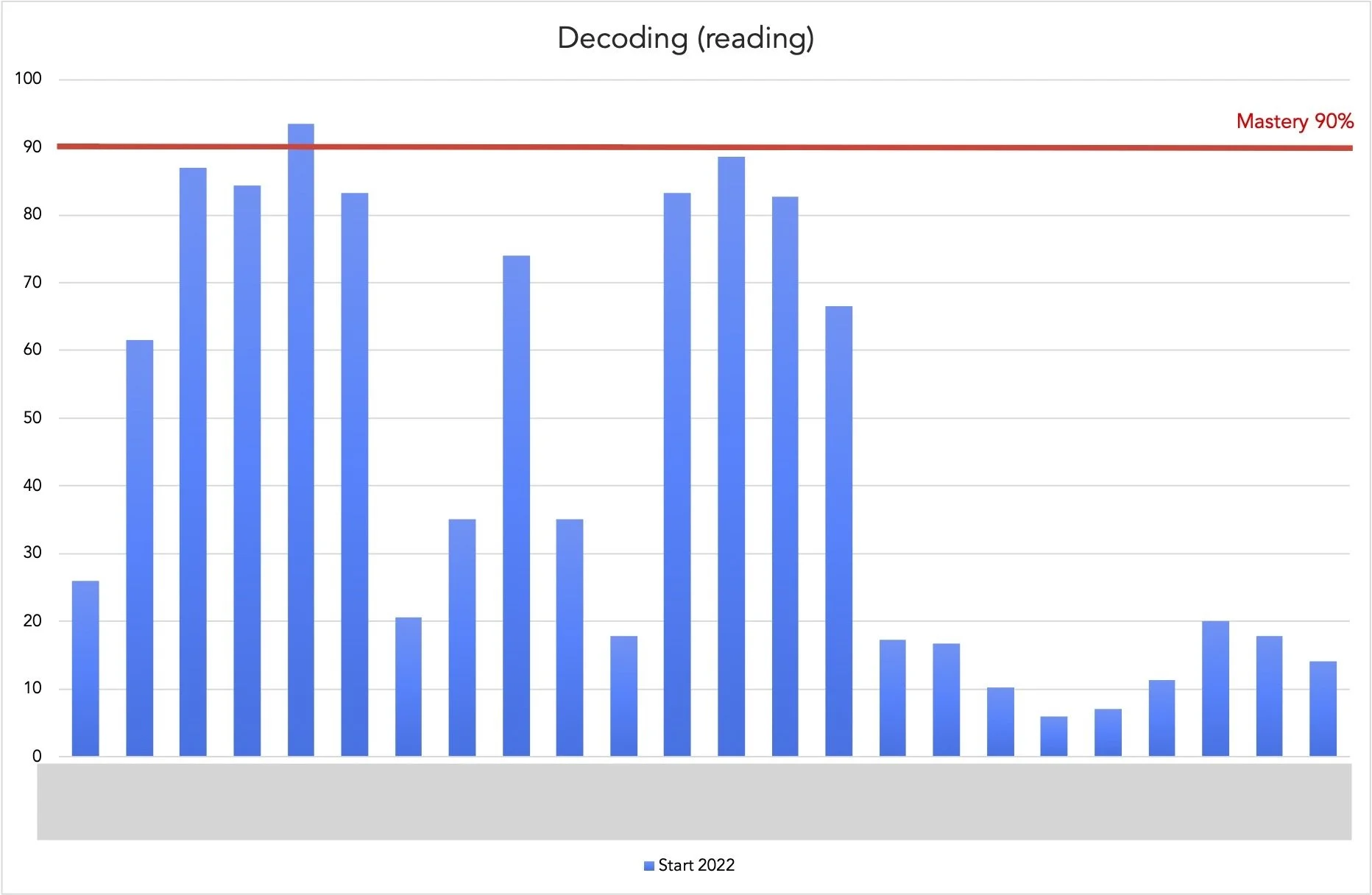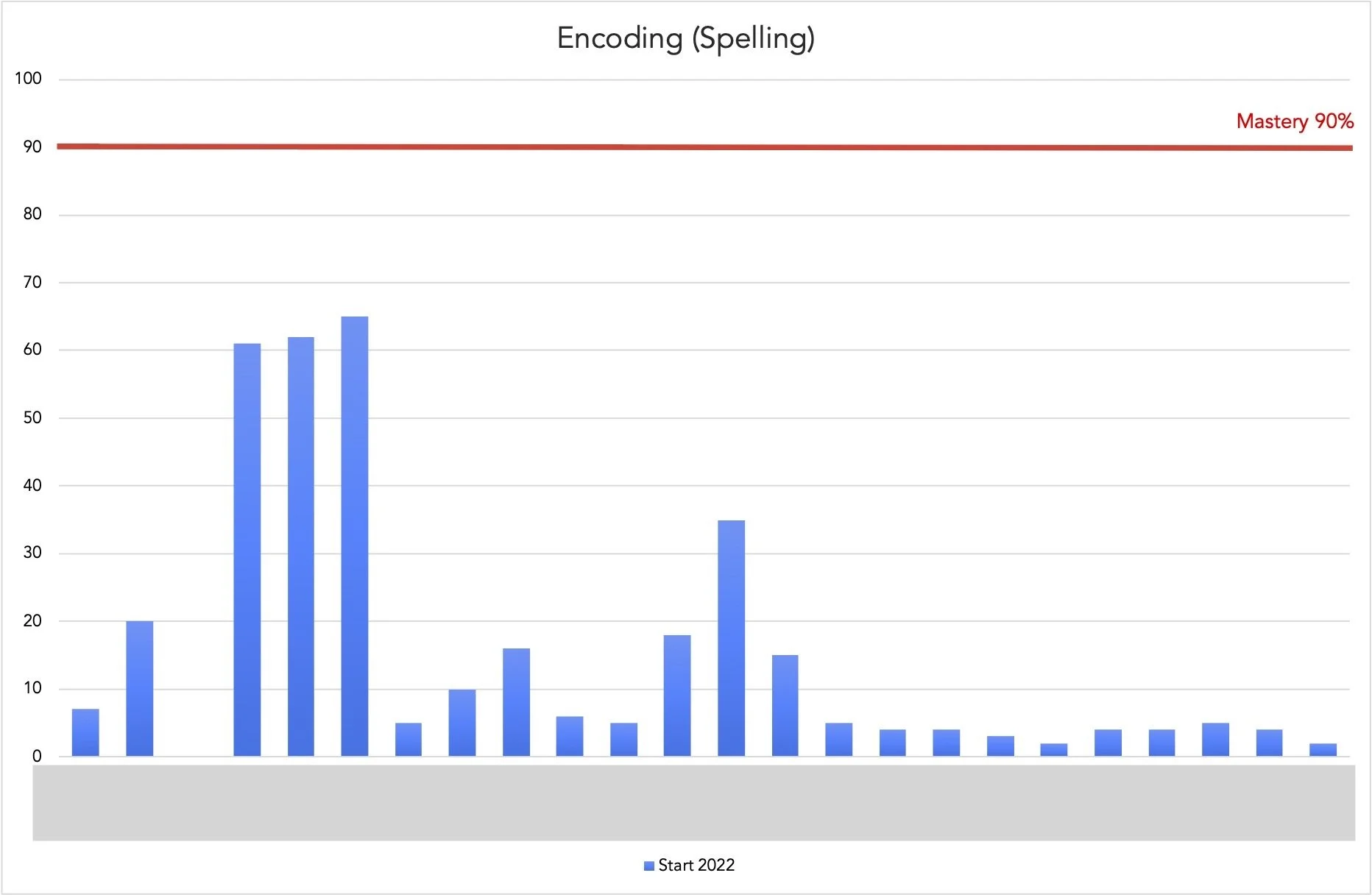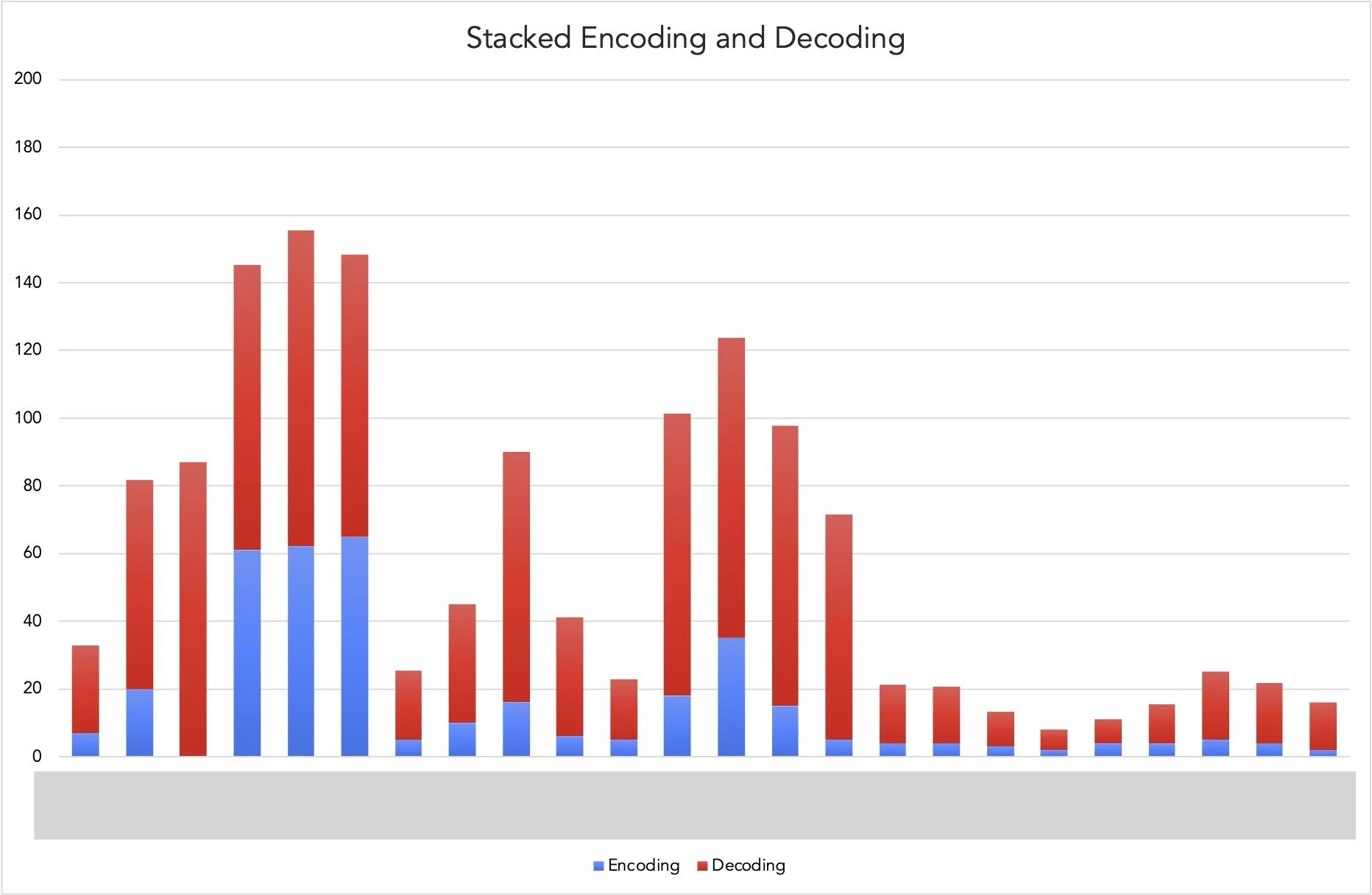Artefact 2-C
Diagnostic language assessments
This graph shows the cumulative phonological awareness of the class across 13 different phonological skills, increasing in difficulty from bottom to top. This data was collected at the end of 2021 and beginning of 2022 using the Institute of Multisensory Structured Language Education (IMSLE) Phonological Assessment.
This chart shows the aggregated data for 13 measures of phonological awareness, with the simplest skills at the bottom of the chart and increasing in complexity as you go up the chart. Mastery of skills 1-10 would be expected in Kindergarten to Year 1; skills 11-13 are more complex and would be expected to be mastered by the end of Years 1-2.
The data indicates that as a whole class the only skill that has been mastered is the identification of the initial sounds in words. Syllable identification (Skill 4) and identification of individual sounds within words (Skill 10) are the lowest of the basic phonological skills, sitting at around 55-60%. These skills are critical for both reading and writing/spelling (see following charts).
The test data also provided detailed information about the phonological skills of each individual child, informing explicit instruction and providing a baseline against which to measure their progress.
“Phonological awareness is a key early competency of emergent and proficient reading, including an explicit awareness of the structure of words, syllables, onset-rime, and individual phonemes. Together with phonics, phonological awareness (in particular phonemic awareness) is an essential competency...”
Phonological assessment
Phoneme assessment
This chart shows how well children can read and say the sounds associated with individual graphemes (e.g. individual letters, phonograms, r-controlled vowels etc) as recorded using the IMSLE Diagnostic Phoneme Assessment. The children are ordered in descending age from left to right. While often it can be harder to read a grapheme out of context (e.g. the sound that "ir" makes is harder to recognise when it isn't in a word, such as "bird") but it does indicate when a child actually knows the grapheme rather than having memorised individual words, e.g. a child might be able to read "bird" but not be able to decode "ir" as reading /er/ in a new word, such as "circumference". As you can see from this chart, most of the class is sitting below 50% proficiency in this skill, and none have reached a level of mastery (90%). This data enables me to identify exactly which graphemes children know and which they need explicit instruction in.
Decoding assessment
This chart shows the individual word decoding scores for each child in the class, as recorded using the IMSLE Diagnostic Decoding Assessment. The children are ordered in descending age from left to right. Considering mastery at 90%, only one child is meeting this standard. Several children are close, but many fall well short. Importantly, the assessment allows me to identify which kinds of spelling rules the children have trouble decoding (such as consonant digraphs and blends or vowel teams/phonograms), and therefore allows me to target instruction for each child.
Encoding assessment
This chart shows the encoding (spelling) scores for each child in the class as recorded using the IMSLE Diagnostic Encoding Assessment. The children are ordered in descending age from left to right. As is readily evident from this chart, even those who are the most adept in literacy within the class have a long way to go to reach mastery in the spelling rules that were tested. However, this data clearly shows scope for improvement, and will serve as a valuable baseline to observe the impact that MSL instruction will have on children’s spelling.
Combined decoding and encoding
This chart shows the data from the IMSLE Encoding and Decoding Assessments stacked on one chart, which offers important insights into the skills and deficits of the children in reading and writing.
The three children with the strongest reading also have strong spelling, at roughly the same level (red and blue equal); but there are also several children for whom their decoding skills far outweigh their encoding skills. These children have learned to read relatively easily, but without explicit teaching of spelling, their encoding (spelling) skills lag behind their reading skills. This allows me to identify those children for whom explicit spelling instruction with is needed. Those that rank equally lowly in decoding and encoding are at an early stage of reading and writing and require explicit instruction in both of these areas.




